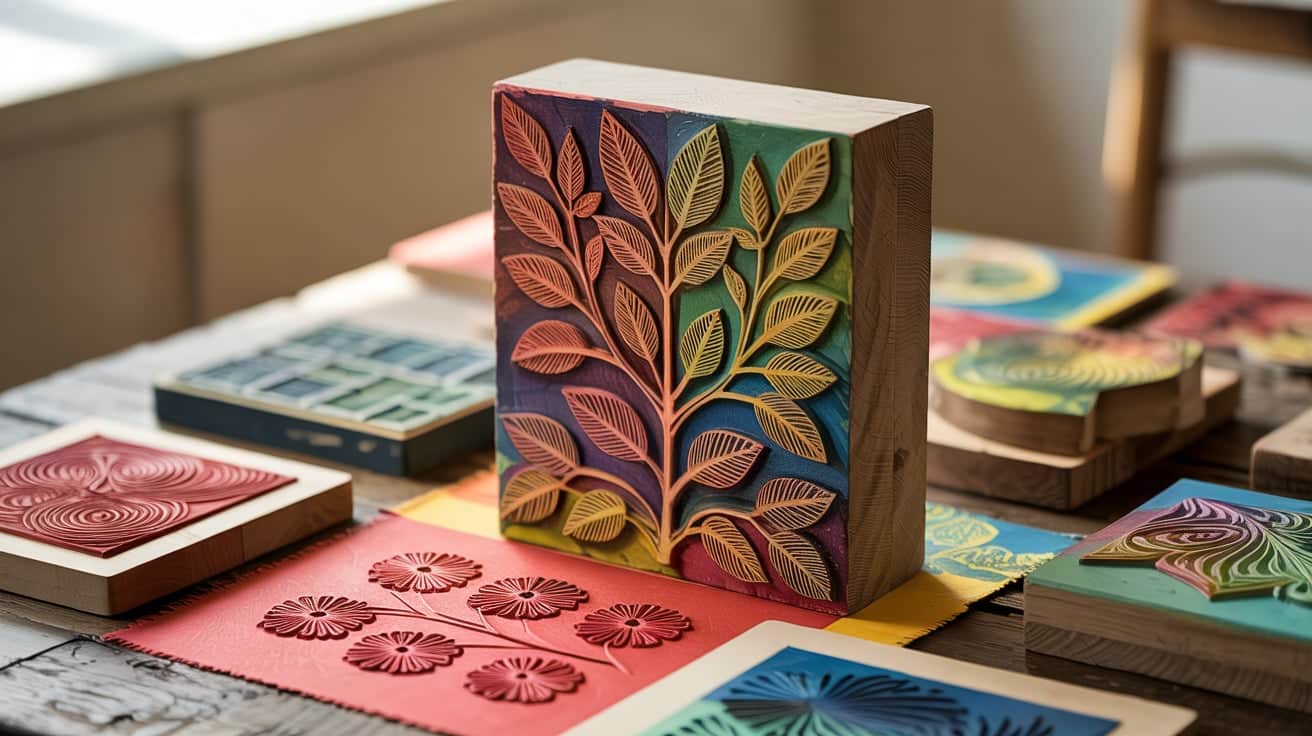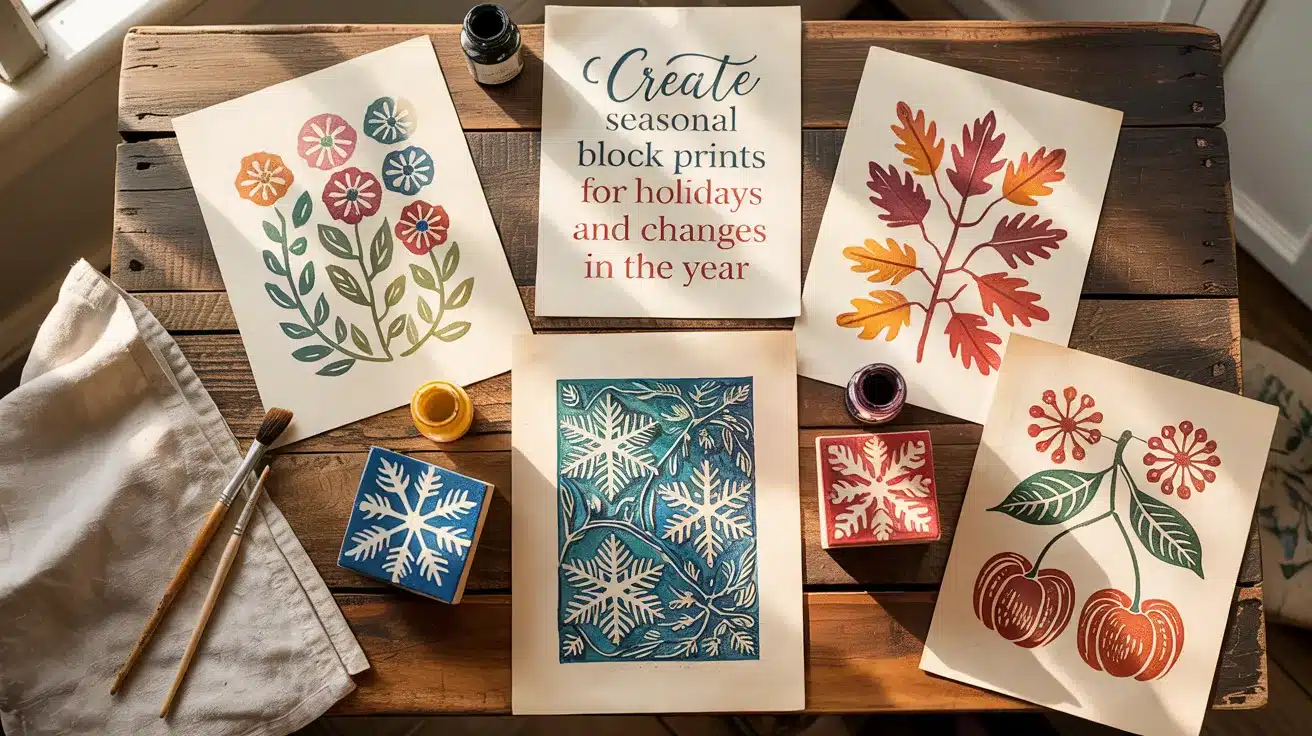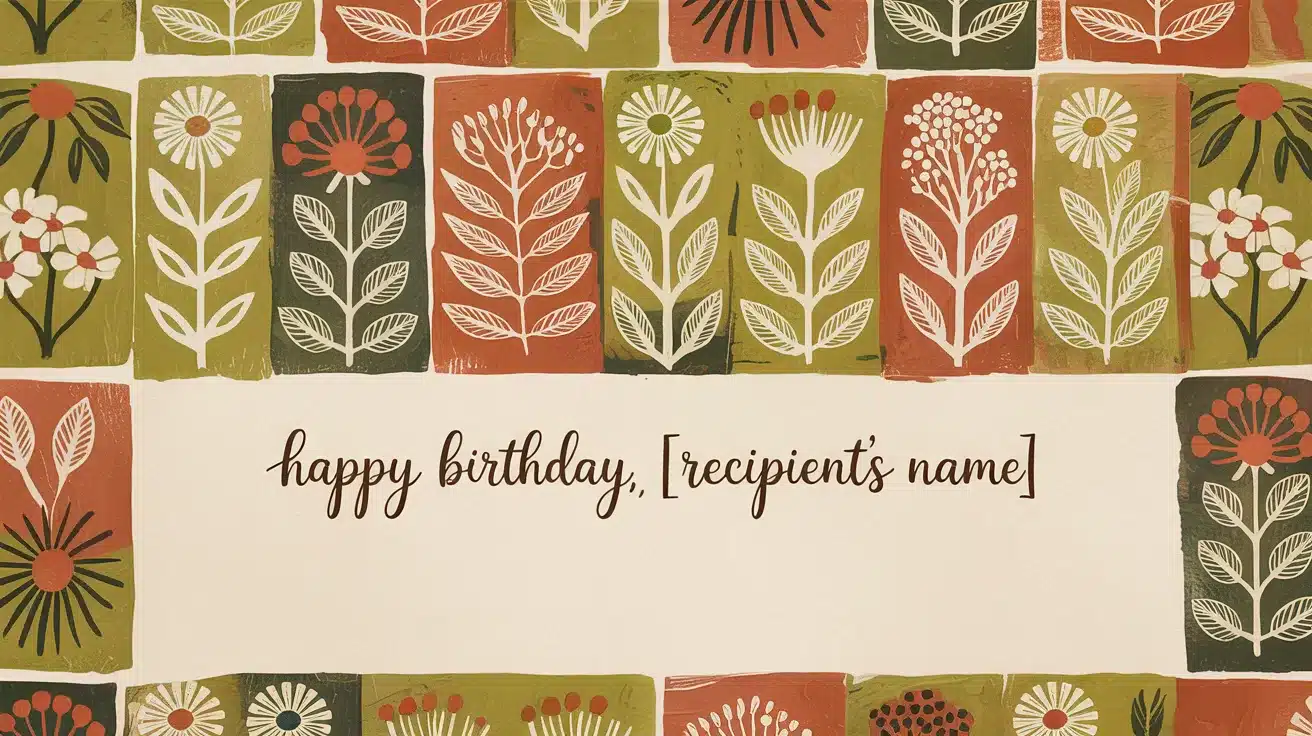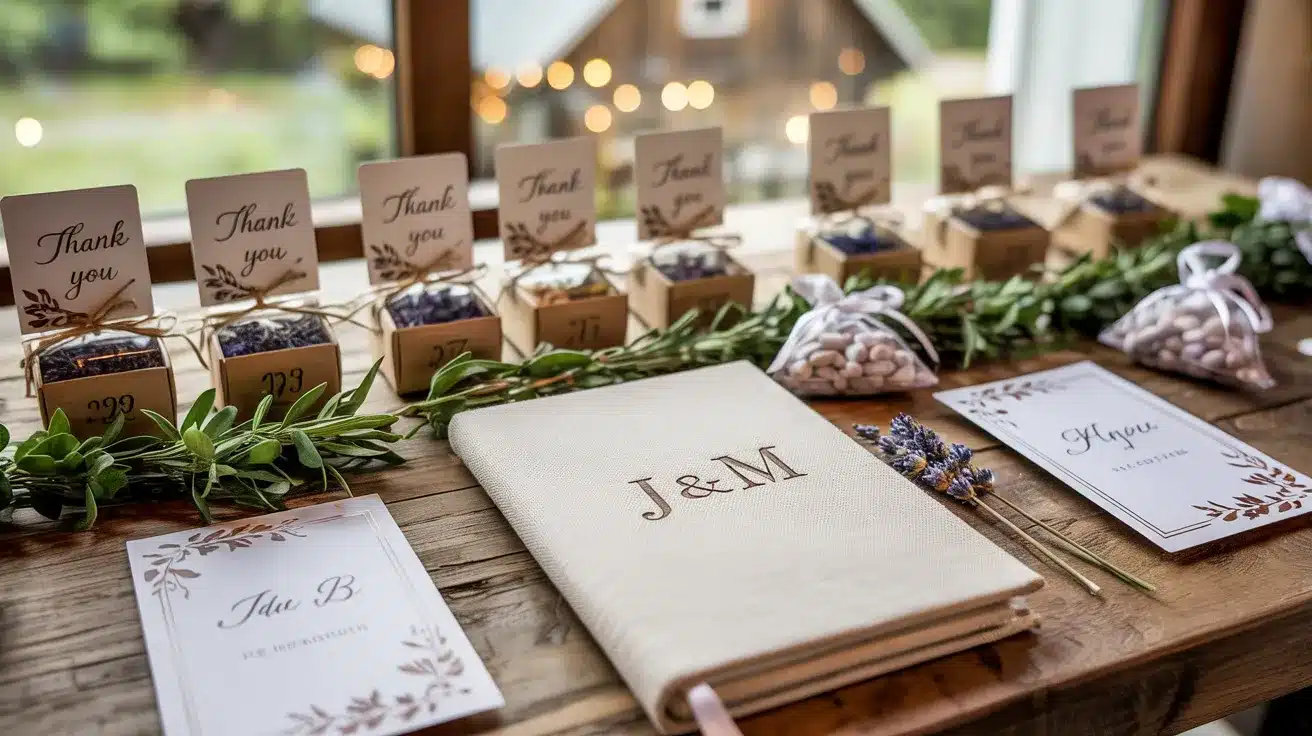Hand-crafted block printing takes time and skill to master. I know how hard it can be to find fresh ideas that stand out from common patterns seen everywhere.
Many crafters feel stuck using the same basic designs over and over.
I’m going to show you 13 block-printing ideas that will help you create truly personal and striking pieces. These methods work on various materials and fit many styles.
In this post, you’ll learn about nature-inspired motifs, geometric shapes, floral designs, and mixed-media approaches. I’ll also cover printing on different surfaces, such as fabric, wood, and paper.
These ideas will help you create unique gifts, home items, and art that showcase your personal touch.
What You Should Know About Block Printing?
1. The Craft Behind Block Printing
Block printing is an old craft that uses carved blocks to stamp ink on surfaces. Artists carve shapes into wood, linoleum, or rubber blocks.
They then coat these blocks with ink and press them onto paper or fabric to make a print. Each print is slightly different, giving the art a handmade feel that many people value.
2. Why Block Printing Is a Timeless Art Form?
Block printing has lasted for hundreds of years because it’s simple yet full of options. Anyone can start with basic tools, but the skill can grow very deep.
The method lets artists make the same design many times, but each print still feels special. Block printing fits well with both old and new styles. Depending on the block design, it can look basic or fancy.
This mix of ease and depth makes it a craft that continues to thrive in a world full of digital art tools.
Types of Block Printing Blocks
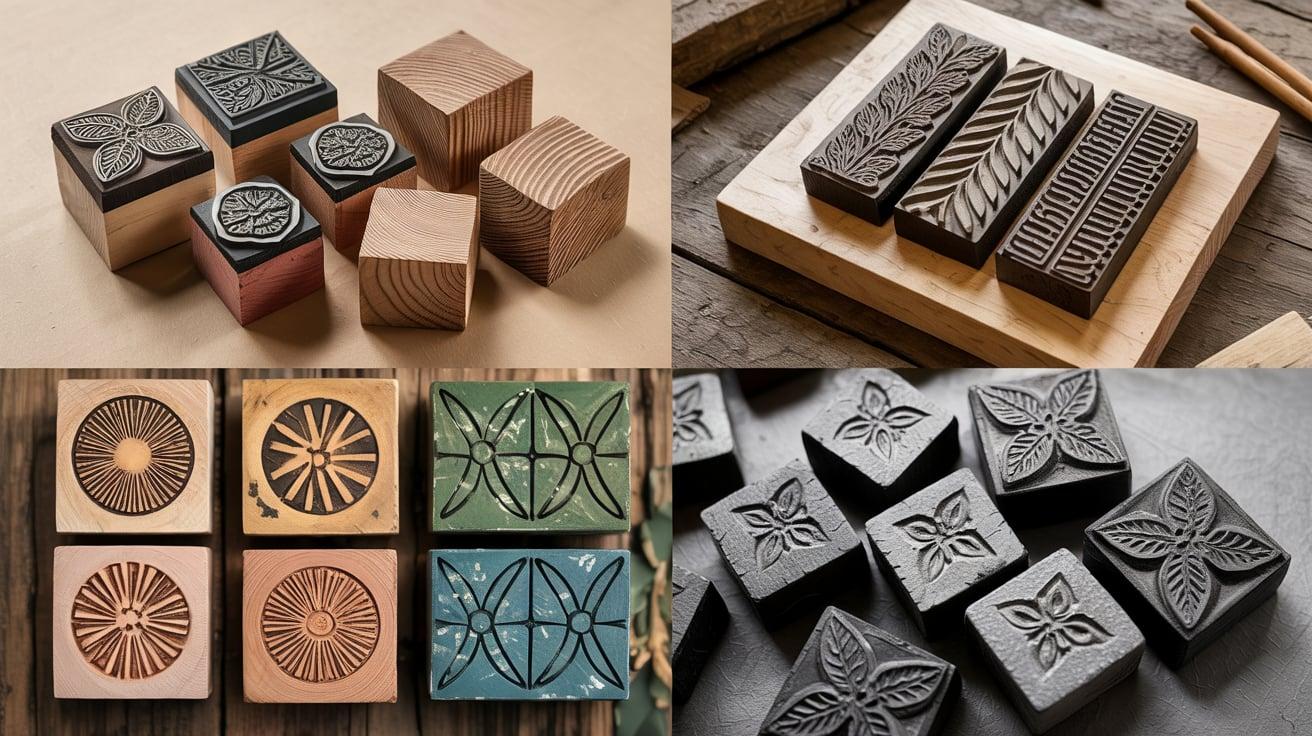
- Linoleum Blocks are soft and easy to carve, making them perfect for beginners. They hold fine details well and last through many prints.
- Wood Blocks come in various hardness levels and show wood grain in prints. They take more skill to carve but can last for years with proper care.
- Rubber Blocks are the softest option and are great for simple designs. They’re cheaper than other types and good for practice or quick projects.
- Potato Blocks are temporary but fun for kids and quick tests. They can be carved with basic tools and are a good way to try block printing before buying supplies.
Inks and Paints You Need
- Water-based block printing ink – Dries quickly and cleans up with water
- Oil-based ink – Gives rich color and works well on fabric
- Fabric paint – Made to stay on cloth after washing
- Acrylic paint – It can work for printing but dries faster than proper inks
- Ink pads – Quick option for small stamps and thin paper
13 Unique Block Printing Ideas to Try
1. Nature-Inspired Prints
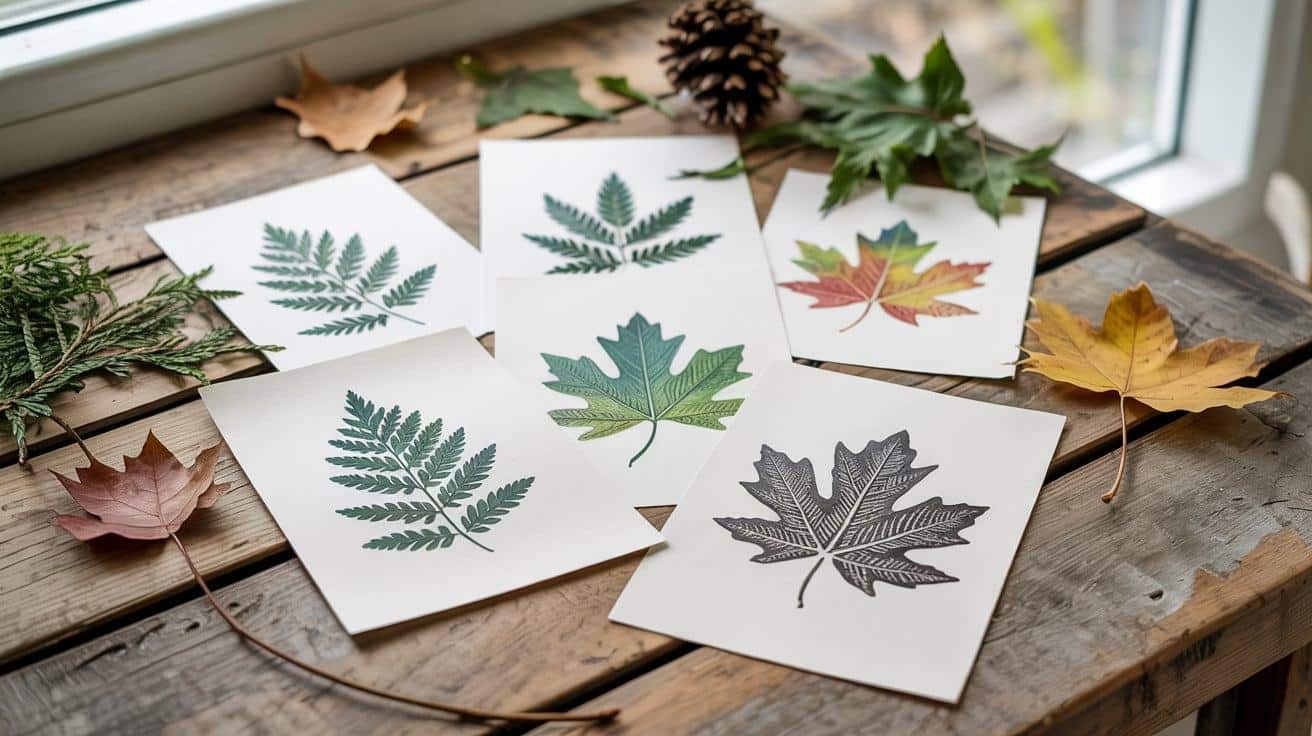
Leaves make perfect natural stamps with their strong vein patterns and clear shapes. Try fern fronds for fine details or maple leaves for bold prints. Pine cones, when cut in half, create lovely circular patterns.
Flowers can be pressed and used directly, or their shapes can be carved into blocks for more lasting use. Small twigs arranged in patterns offer rustic, branch-like prints.
2. Geometric Patterns for Modern Designs
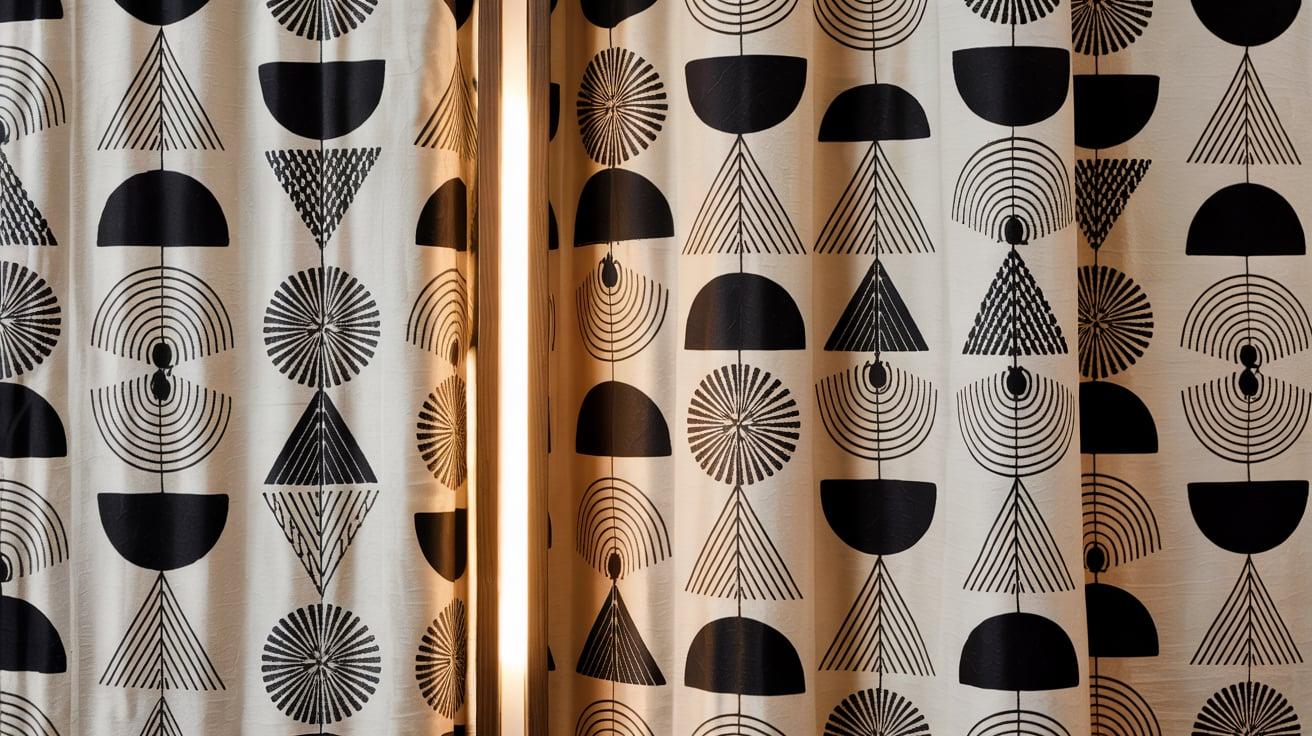
Simple shapes like triangles, circles, and lines can be combined for striking modern prints. Try carving a block with repeating shapes that can link together for an all-over pattern.
Half-circles can create scalloped edges or wave patterns. Grid patterns with small variations add subtle interest to plain items. For beginners, straight lines and basic shapes are easier to carve and print clearly.
3. Bold Floral Block Printing Ideas
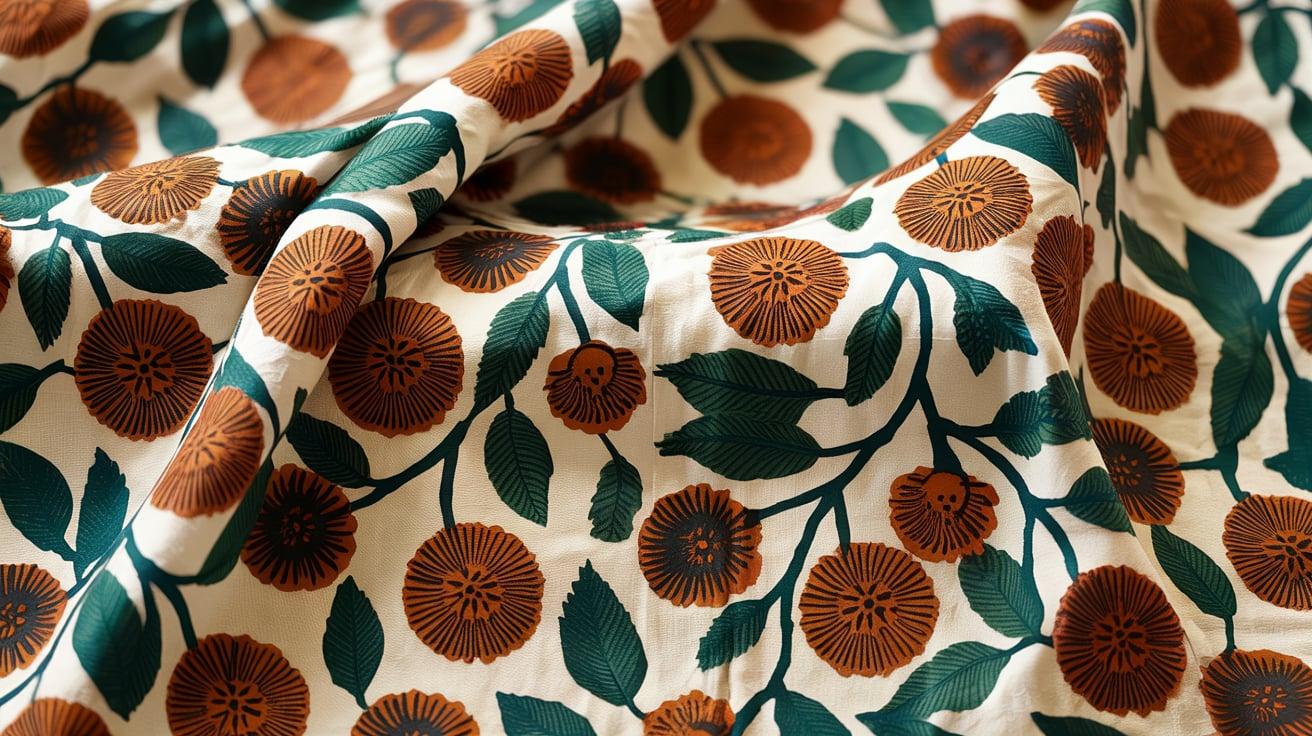
Large flower outlines work well for statement prints that grab attention. Try carving just the basic shape of roses, sunflowers, or peonies.
Use thick stems and leaves to create strong visual lines in your design. For a modern look, make flowers more stylized rather than realistic. Consider carving both the flower shape and a background pattern to create contrast when printing.
4. Abstract Art with Block Prints
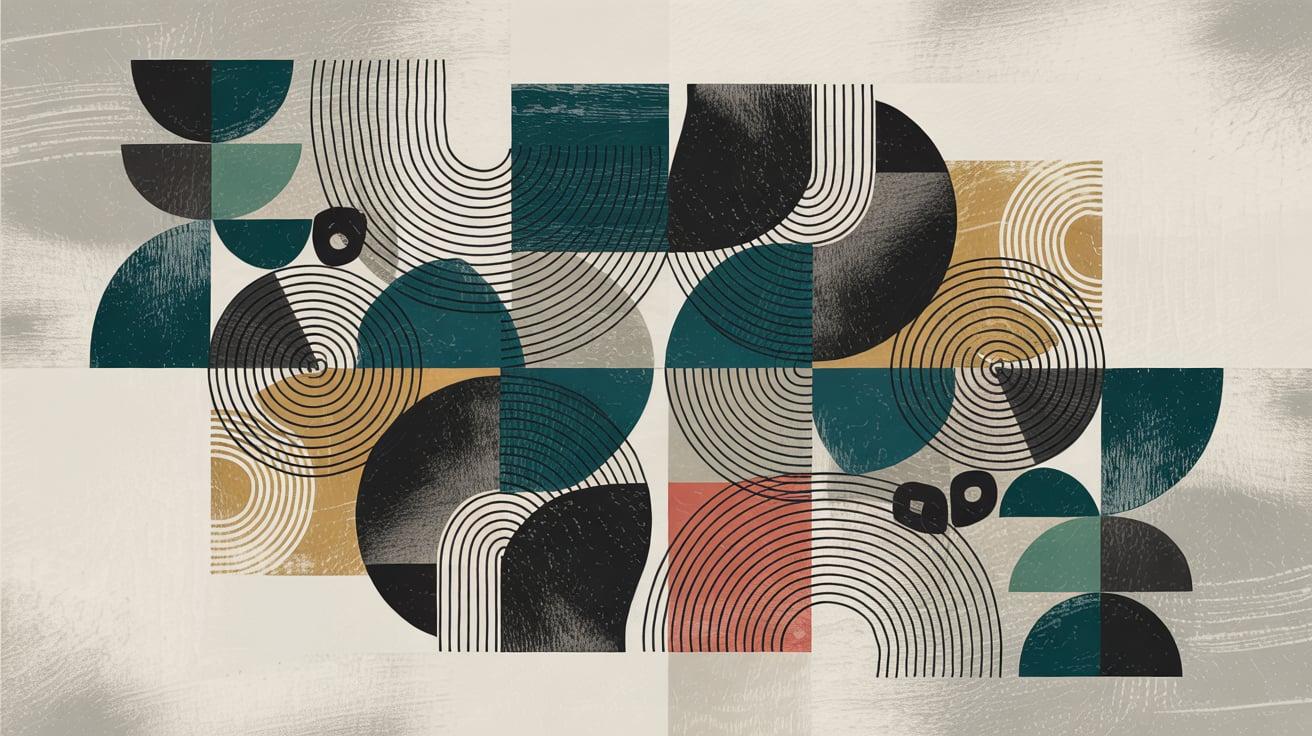
Cut blocks into odd shapes like half-moons, wavy lines, or random forms. Print them in patterns that overlap to build depth and texture.
Try printing the same block in different directions to create new shapes where they meet. Use blocks of various sizes to add visual interest.
Simple marks repeated many times can create complex-looking prints that draw the eye across the entire piece.
5. Personalized Gift Wrap with Block Prints
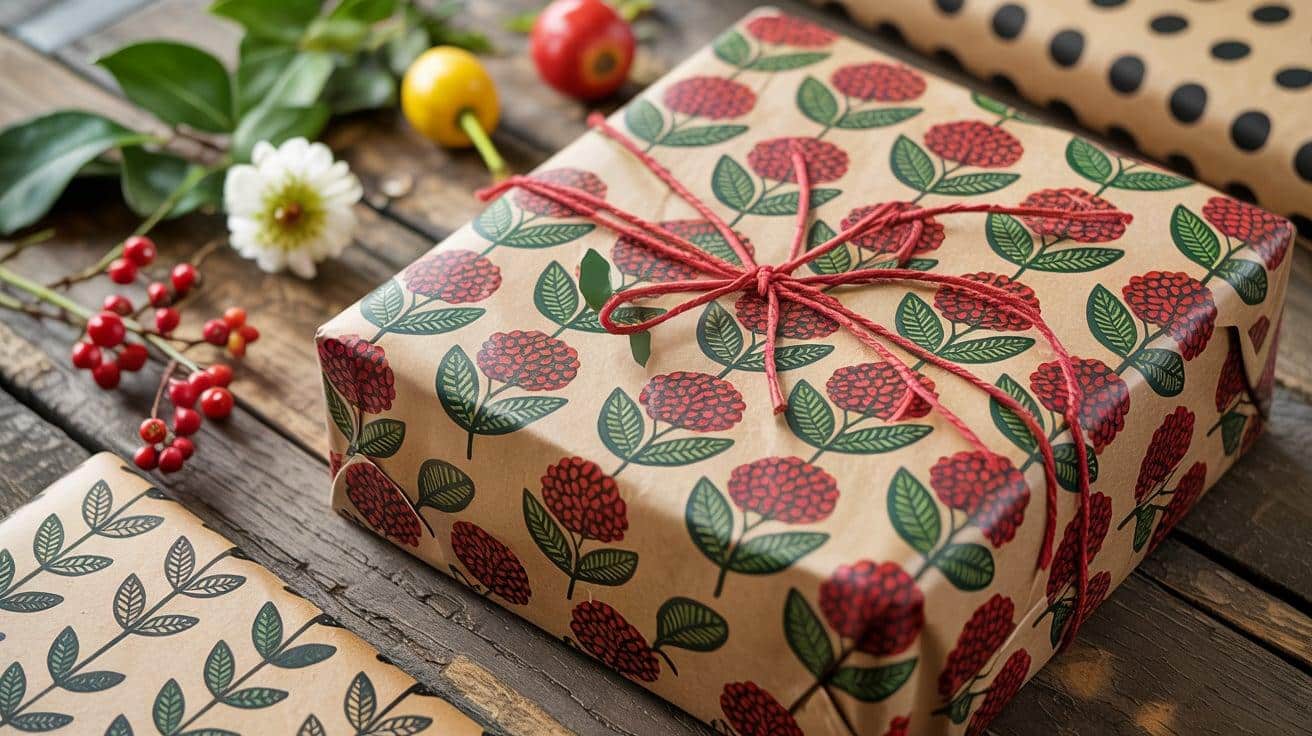
Use plain brown kraft paper or white butcher paper as your base for a custom gift wrap. Carve a small, simple motif that matches the gift inside or the person receiving it.
Print in rows or random patterns across the paper. Add a second color for special touches like berries on a branch or centers of flowers. This makes even simple gifts feel more thoughtful and shows you took extra time to make the wrapping special.
6. Block Printed Wall Art
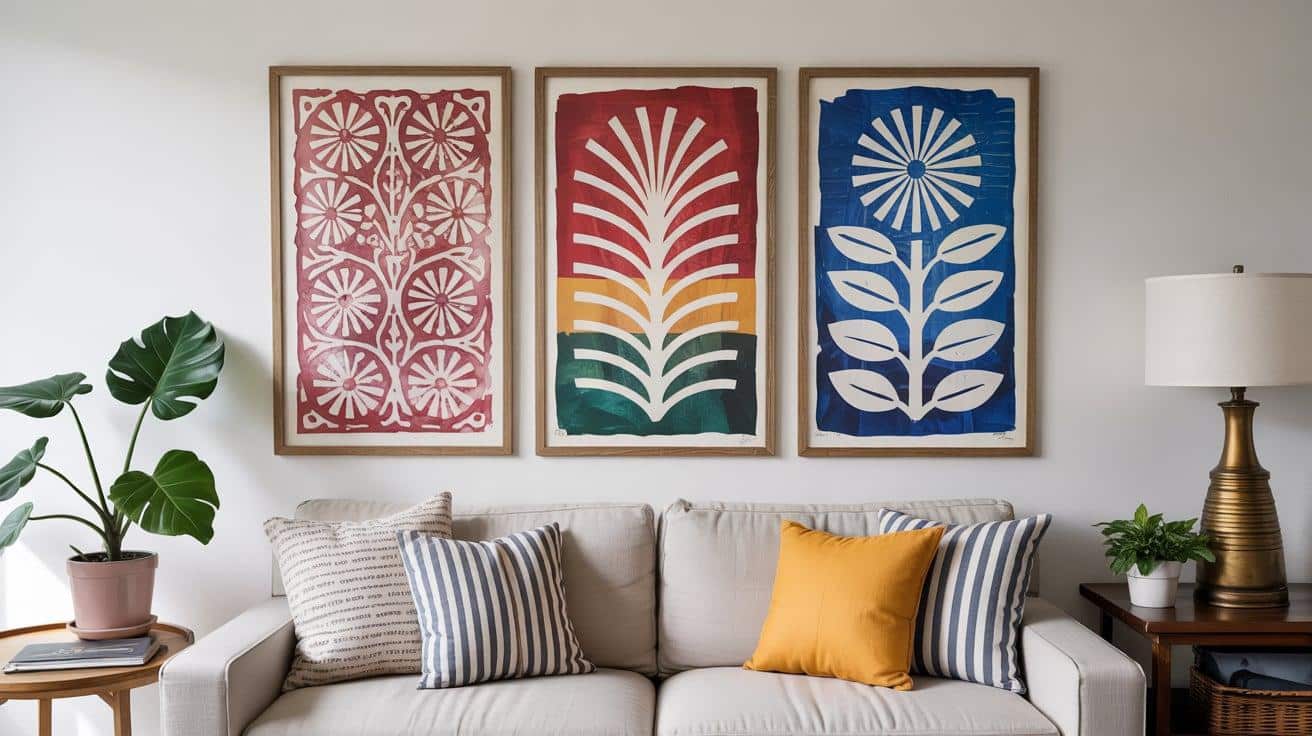
Prints are made onto high-quality paper that can be framed for instant wall decor. Try making a set of three related prints that work together as a collection.
Large-scale prints with bold designs make strong focal points in a room. For more subtle art, use tone-on-tone colors or print onto colored paper.
Layer multiple blocks in different colors to create depth and interest that stands out on your walls.
7. Eco-Friendly Block Printing on Recycled Paper
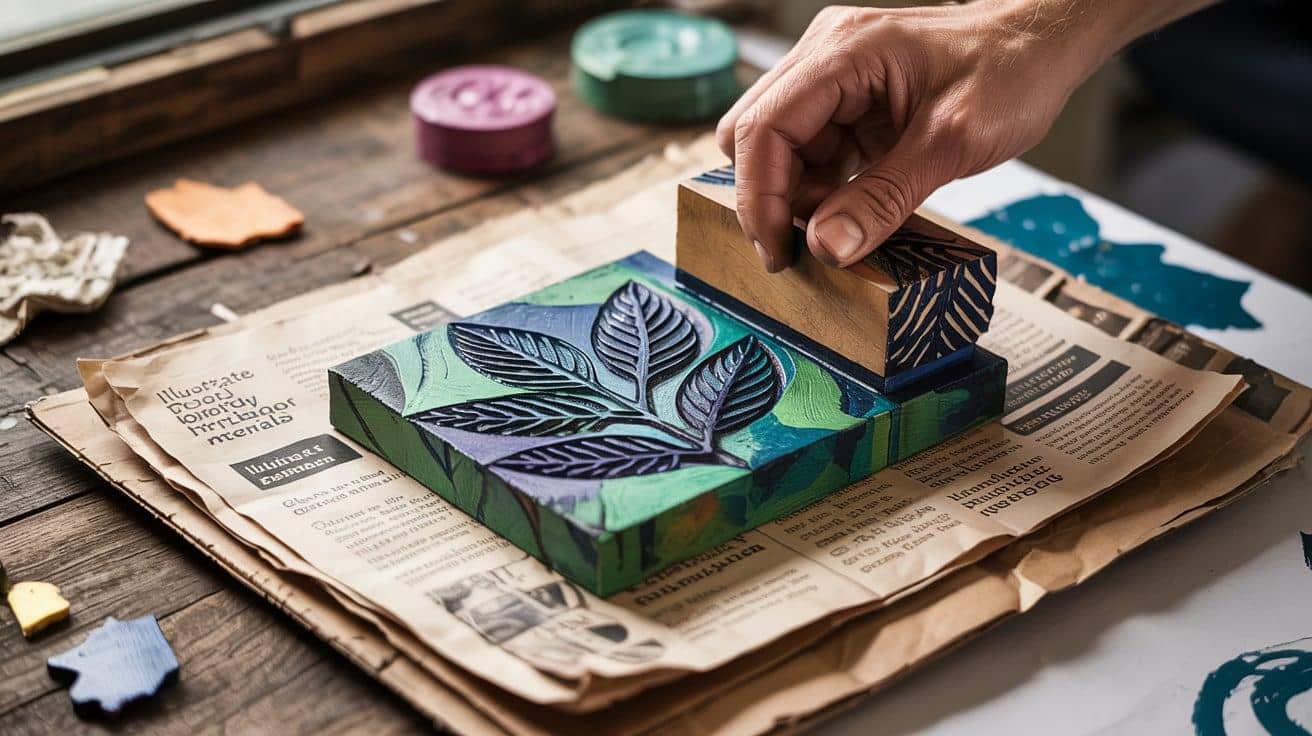
Reuse old newspapers, grocery bags, or used copy paper as printing surfaces. Make simple notecards from cereal boxes cut to size and printed on the blank side.
For a more earth-friendly approach, try water-based inks that contain fewer chemicals. Paper scraps can be printed and turned into gift tags or small art pieces.
This method gives new life to materials that might otherwise be thrown away.
8. Block Printing on Fabric for Fashion
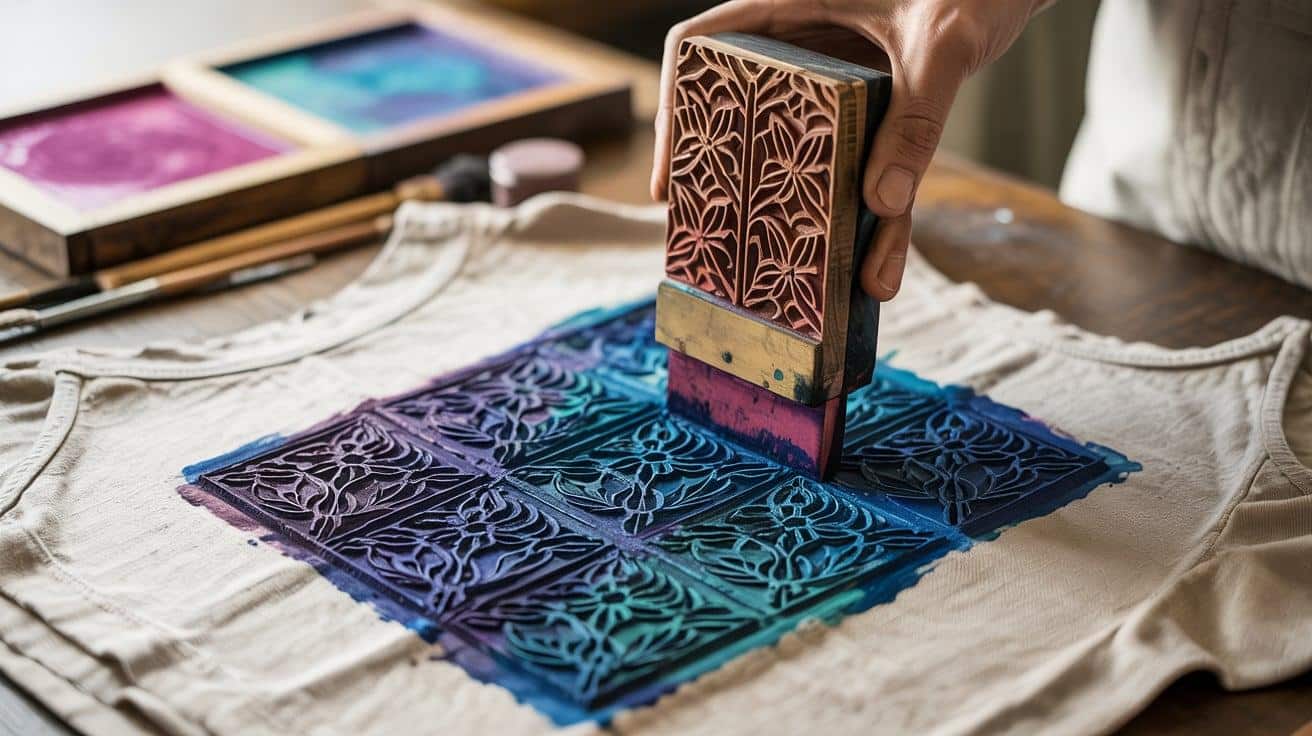
Print your pattern on plain T-shirts, scarves, or canvas shoes for one-of-a-kind clothing. Use fabric-specific inks that will stay on cloth after washing.
Test your design on scrap fabric first to check how the ink behaves. Think about placing prints along hems, collars, or panels, which often look more professional than random stamps.
Small, repeated patterns work well for clothing that needs to bend and move with the body.
9. Using Mixed Media with Block Prints
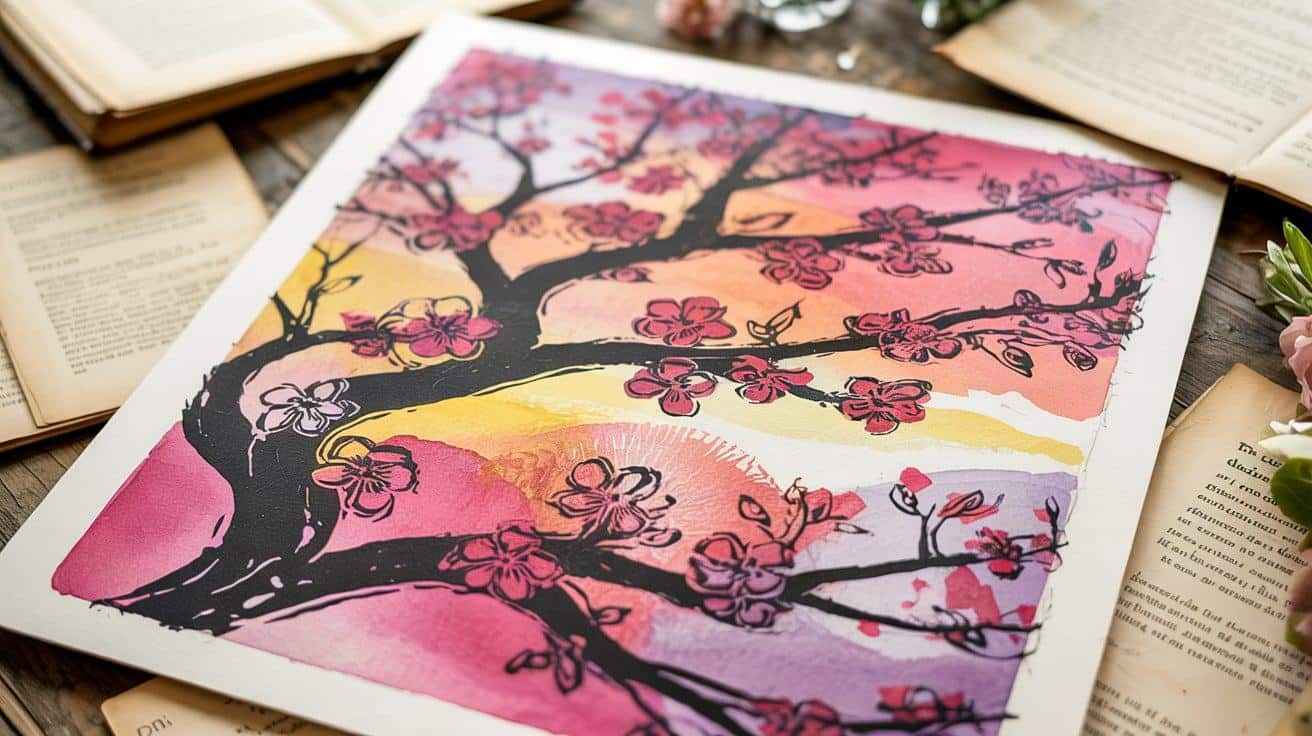
Combine block prints with watercolor washes for backgrounds that make your prints pop. Add colored pencil details to printed designs for extra depth and shading.
Try printing onto pages from old books or maps for instant texture and interest. Collage can work well – cut out printed elements and arrange them on new backgrounds.
This mix of methods creates rich, layered art that has more visual impact than block printing alone.
10. Block Printing on Wooden Surfaces
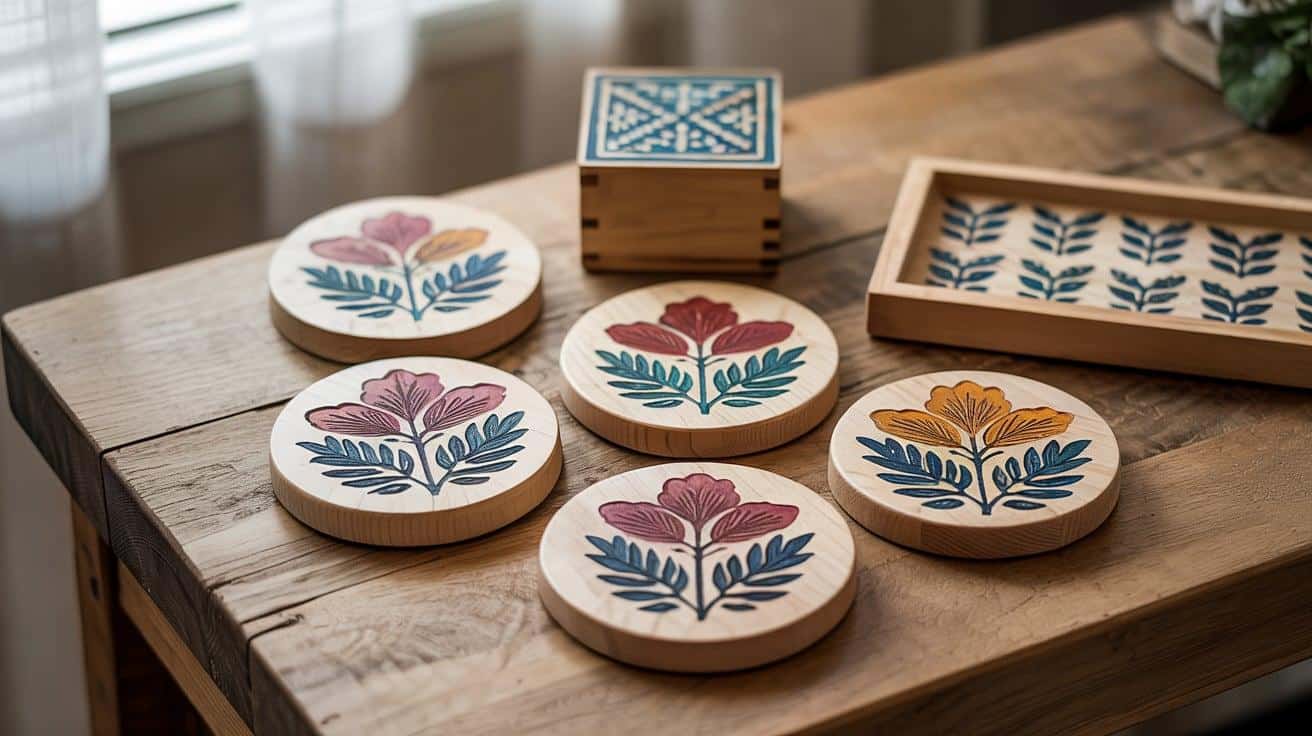
Smooth wooden boxes, trays, or coasters take block prints well and become useful art. Sand the wood first for the best ink transfer and seal after printing to protect the design.
Wooden spoons with printed handles make sweet gifts for cooking fans. Try printing onto thin wood veneer that can be cut and used for ornaments or jewelry.
The natural grain of the wood shows through the ink, adding an extra element to your design.
11. Creating Block Print Greeting Cards
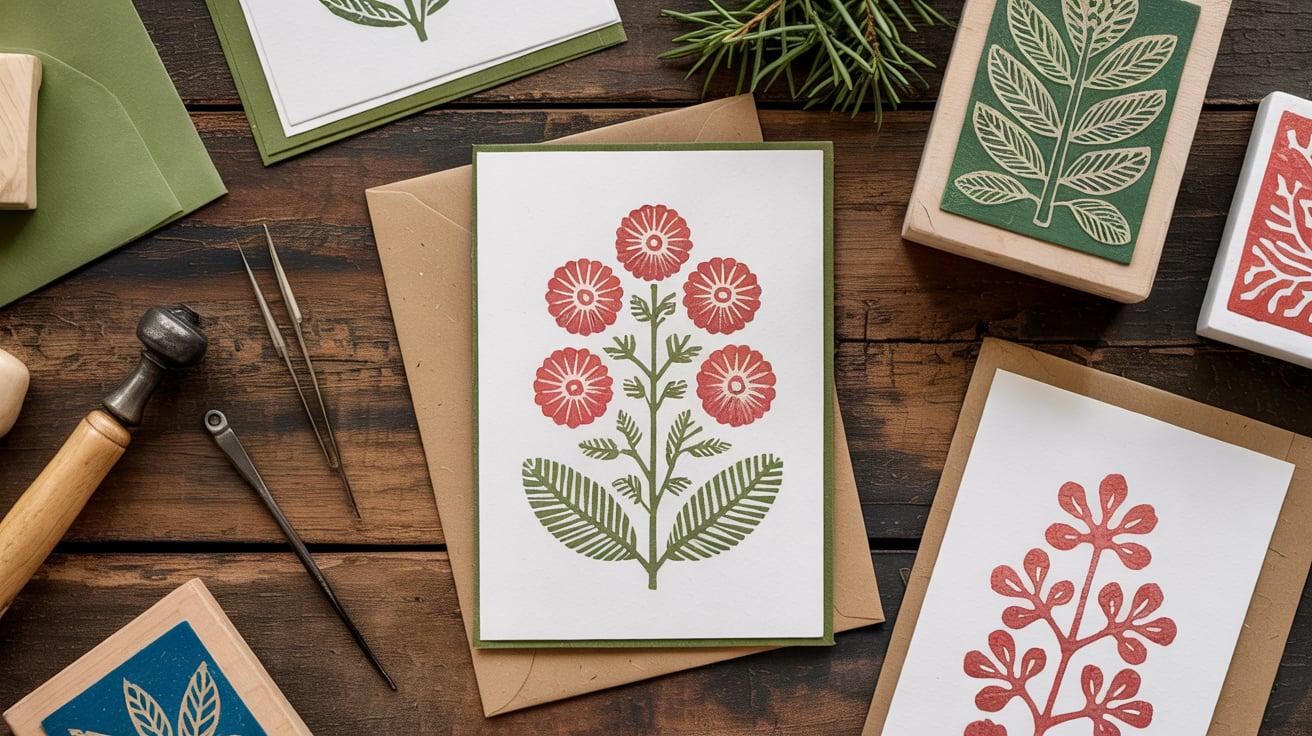
Make custom cards that people will keep long after they receive them. Fold good card stock for a base that holds up to printing pressure.
Simple designs often work best on the small space of a card front. For holidays, carve seasonal motifs that you can use year after year.
Leave space inside for handwritten notes to keep the personal feeling throughout. These cards cost less than store-bought ones and mean much more to recipients.
12. Experimenting with Multi-Color Prints
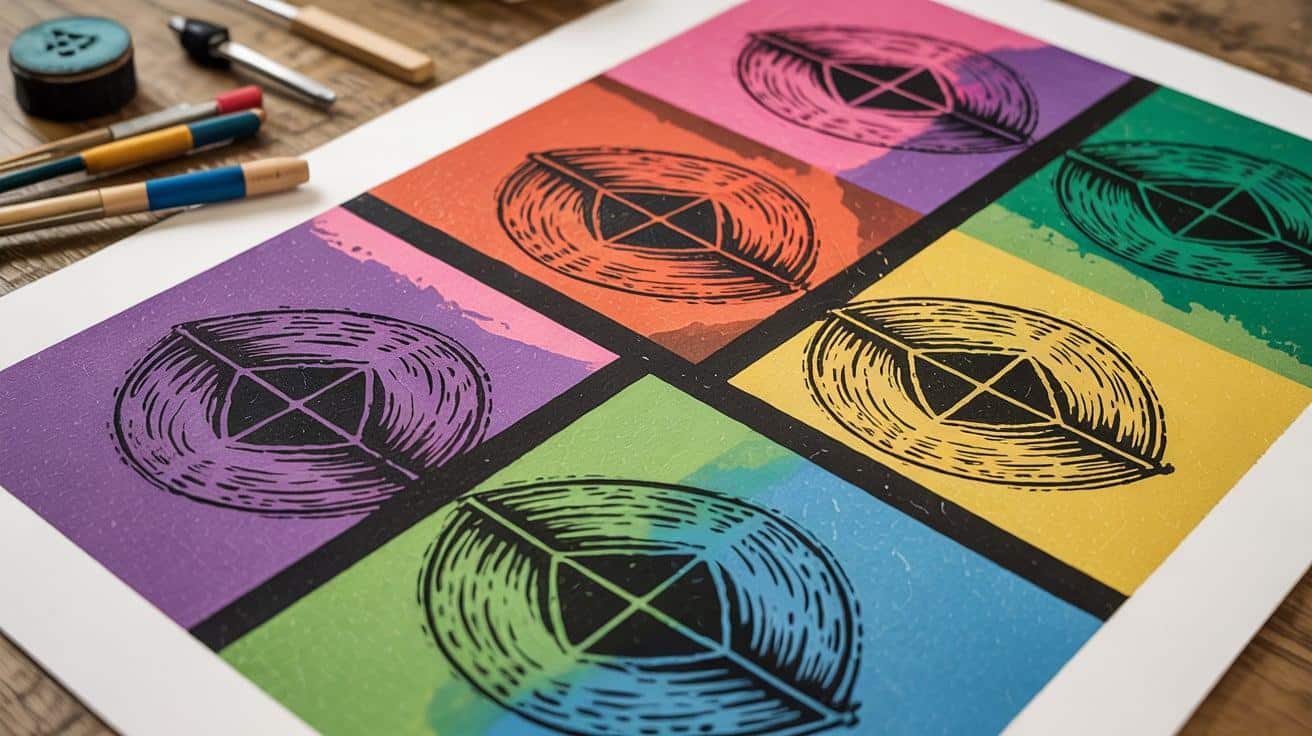
Try the reduction method where you print one color, then carve away more of the block for the next color. Use multiple blocks of different colors that line up to create one image.
Test printmaking with color gradients by rolling two colors side by side on your inking plate. Overlapping two color prints can create a third color where they meet.
Careful planning helps prevent muddy results when using more than one color on your prints.
13. Seasonal Block Printing Ideas
Create prints that change with the calendar to keep your craft fresh all year. Carve spring flower blocks for Easter cards and summer projects.
Make leaf stamps in fall shapes, like maple or oak, for autumn decor. For holiday cards, winter calls for snowflakes, pine trees, or star patterns.
Fruits and vegetables in season make great kitchen prints; try cherries for summer and pumpkins for fall. Using the same technique year-round but changing your subject matter helps build skills while making items that feel current and timely.
Creating Textured Prints with Different Blocks
The materials you choose for your blocks can add natural texture to your prints. Wood blocks show grain patterns that become part of your design.
Try carving blocks with various tools to create different line qualities – V-gouges make thin, sharp lines, while U-gouges create softer, wider marks.
You can also add texture by adding items to your blocks. For example, glue string, fabric, or natural materials like leaves to a base block.
For more subtle effects, try pressing your block unevenly or using a dry brush technique with less ink on parts of the block. These methods add visual depth that flat prints lack.
How to Incorporate Block Prints into Home Decor?
1. Using Block Prints on Pillows and Cushions
Plain pillow covers offer perfect blank canvases for block printing. Choose fabric inks that withstand use and washing for lasting results.
If you’re new to fabric printing, start with simple corner designs. These small touches add character without overwhelming the space.
For bolder looks, try all-over patterns or large central motifs. To balance your room design, mix printed pillows with solid-colored ones.
Cotton and linen take prints well and come in ready-made pillow covers that you can find at craft stores.
2. Block Printing for Wall Hangings and Curtains
Print directly onto fabric panels to create wall hangings with a personal style. Heavy cotton works well and can be hung from wooden dowels.
For curtains, print along the bottom edge or sides rather than trying to cover the entire fabric. This focused approach looks more professional.
Try printing on pre-made drop cloths for an affordable large-scale wall piece. Their neutral color makes a good background for most designs.
Remember that large fabric pieces need plenty of drying space and time before hanging.
3. Adding Block Prints to Kitchenware and Accessories
Plain tea towels become special when printed with food-themed blocks. They make great gifts in sets of two or three.
Table runners and placemats with simple repeated patterns bring handmade charm to dining spaces. When using these items, remember food safety and use the right inks.
Printed canvas tote bags for grocery shopping with style. They’re easy to work with as they lay flat for printing.
Small wooden items like spoon rests or cutting boards can also be printed. After the ink dries, seal them well with a food-safe finish.
Block Printing for Special Occasions
Creating Custom Invitations with Block Prints
Hand-printed invitations show guests your event is special from the start. Carve a simple motif that fits your occasion theme. Print onto good card stock in colors that match your event.
Add written details by hand or with a printer after the block design dries. These stand out in a world of digital invites.
Block Print Wedding Favors and Decor
Print small tags with names or thank-you messages to attach to wedding favors. Create table numbers or place cards with a consistent design.
Make a guest book cover with the couple’s initials or wedding date. Small printed sachets filled with herbs or candy make sweet take-home gifts for guests.
Celebrating Holidays with Block Printed Gifts
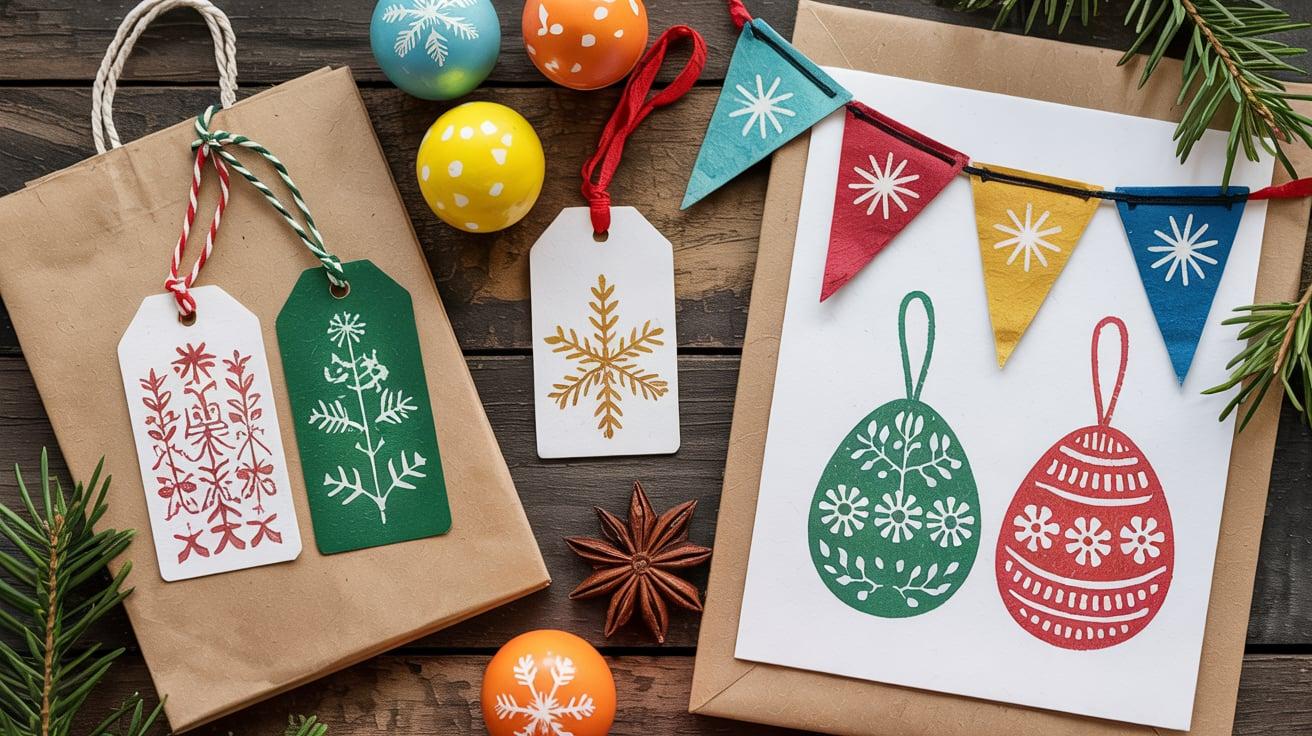
Print custom gift tags for Christmas or birthday presents. Make Halloween trick-or-treat bags with spooky stamped designs.
Create Fourth of July bunting with star prints on fabric triangles. Easter egg designs can be printed onto paper for cards or wrapping. Block-printed ornaments become yearly keepsakes that friends remember.
Conclusion
Block printing brings a personal touch to items we use every day. From simple cards to fabric pieces, this old art form fits well in current homes.
The methods we covered can work for both new crafters and skilled artists looking for fresh ideas.
Try starting with a small project, such as gift tags or a stamped tea towel. As you become comfortable with the tools, you can move on to more complex work.
Each print you make carries your mark and style, something no store-bought item can match.
The small changes between each print show the human touch behind the work.
Block printing lets you slow down and focus on making something by hand. In our fast-paced world, this kind of careful craft brings a sense of calm and satisfaction.
Frequently Asked Questions
1. What Can you Make with Block Printing?
With block printing, you can make cards, posters, fabric patterns, wrapping paper, and artwork.
2. What Products Can Block Printing Be Used for?
Block printing works for textiles, stationery, bookmarks, home decor, and custom clothing.
3. What Are the Limitations of Block Printing?
Block printing limitations include difficulty with fine details, color-blending challenges, and time-consuming production.

